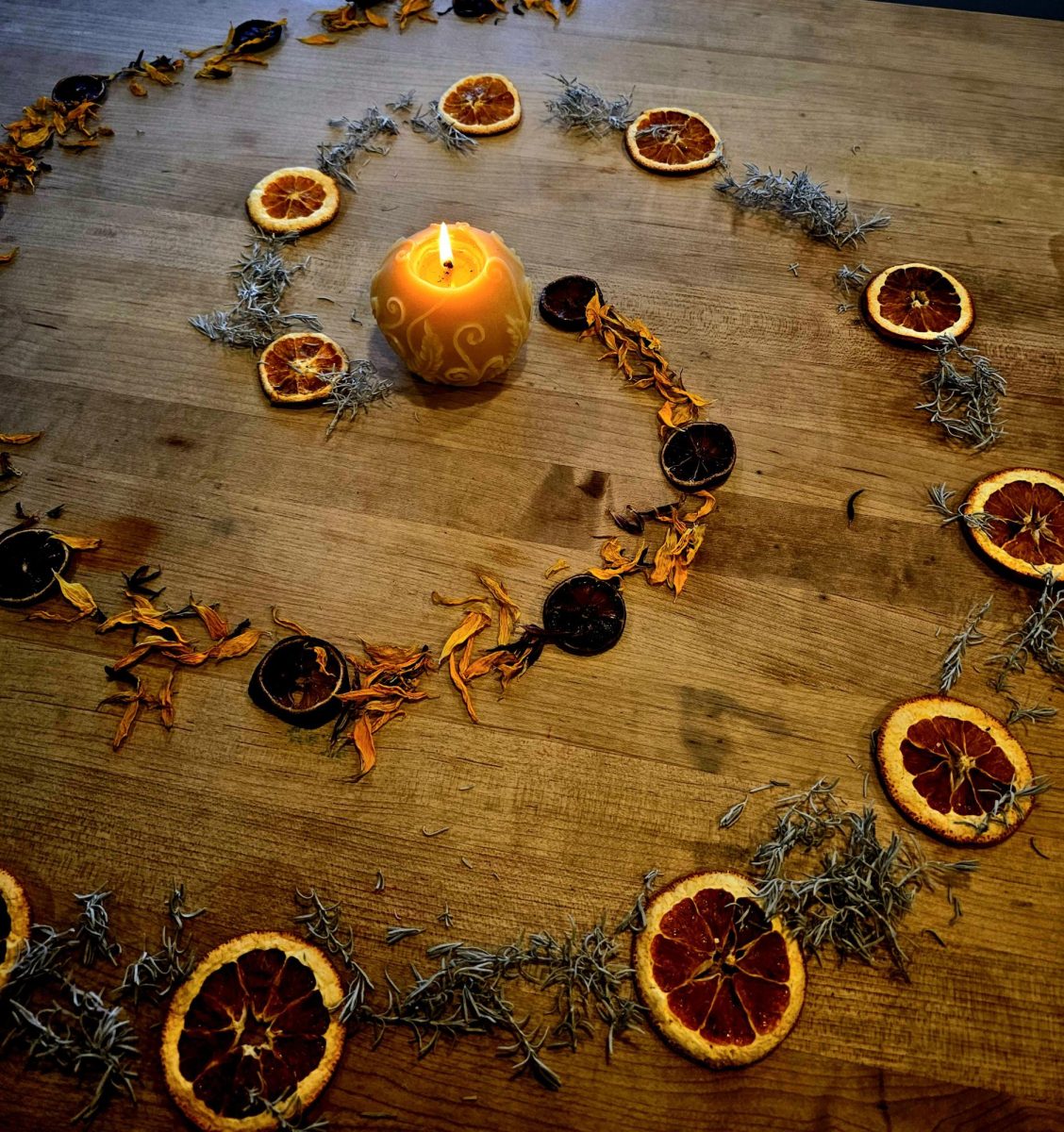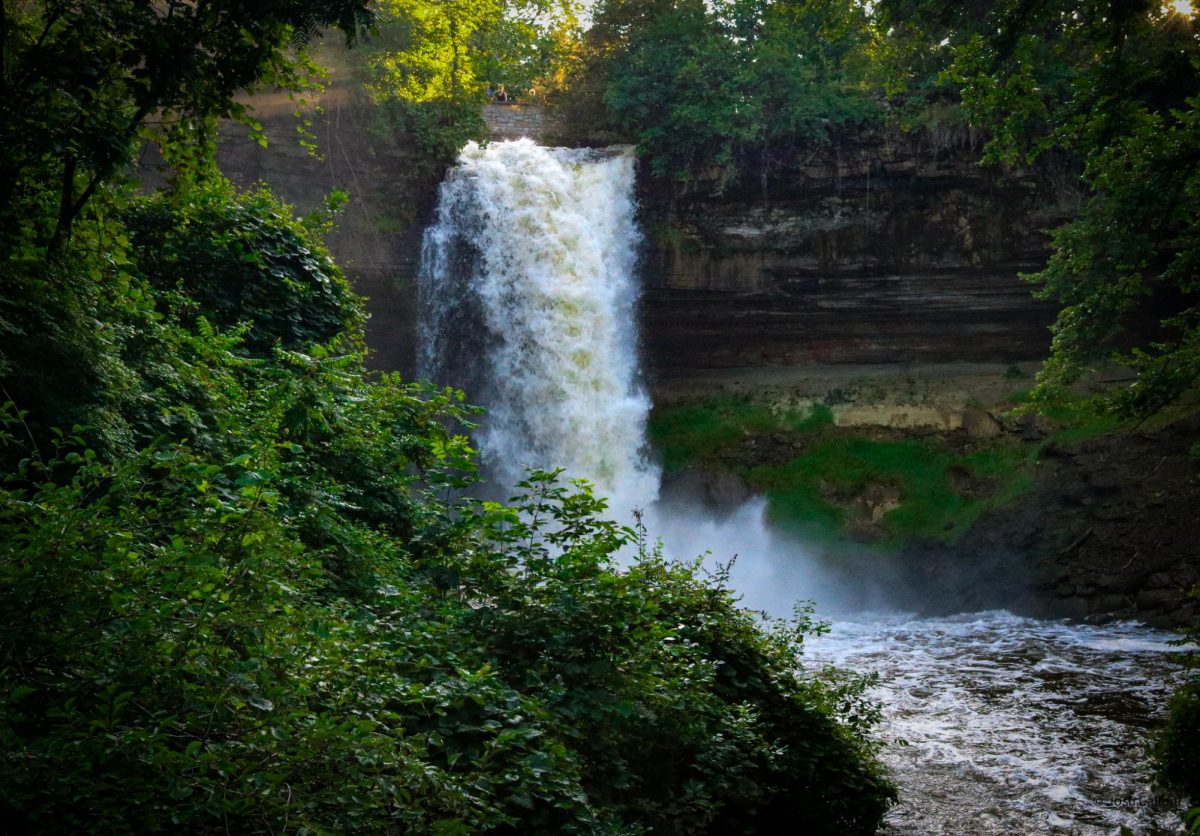Dec. 21, 2023 is the longest night of the year.
This night is known as the winter solstice. For most cultures, it was celebrated as a night of renewal and birth, right before the days began to grow longer. In modern-day pagans tend to call the celebration of the winter solstice Yule.
Yule is derived from the original Norse tradition of Jol (pronunced yu-ol), one of the oldest winter solstice festivals documented. The festival was named after the Norse god Odin, one of his many names was Jolnir (pronounced Yu-ol-near), and one of his many duties was the patron of the dead. In translation to the Scots language, Jol became Yule.
Yule was a night threaded with themes of fire, light, and feasts. Many feasts at this time were focused on meat. In the colder months, many farmers would start to thin down their livestock due to dwindling food, so most festive foods were roasted meats.
Mentions of Yule quickly spread to other early Germanic cultures, otherwise known as northern European cultures, during the 8th century AD. Some people included Jol as a part of the pagan calendar, it was the first day of Giuli. Giuli was the time between the winter solstice and the spring equinox where the days began to lengthen. Hence the connection between the winter solstice and birth.
Other places had different names for the solstice. The early Romans celebrated Saturnalia, a week-long celebration of Saturn the god of agriculture in hopes of bringing spring back to the land sooner and ending on the solstice. Most of the stories and folklore behind the night has the same main arc. The sun is reborn on the darkest night of the year, on the night of Yule we welcome as much good and joy as we can as well as the growing days ahead.
By the 10th century AD, Yule and the Christian holiday of Christmas began to merge. Due to the season, many homes began to smell unpleasant so families would fill their homes with pleasant smells. Many families brought trees and greeny indoors, both to bring the fresh smell and the reminder of life into their homes. When citrus fruits began to be more popular, families would dry out oranges and hang them around their homes.
The tree indoors has become a staple of modern-day Christmas celebrations. However, dried oranges or even rolled cakes and icing into a Yule log remain part of the Pagan tradition. In my family home, we decorate with plenty of red and green. Our tree is sadly plastic due to a family member’s allergy, but we try to have a live tree on our porch.
This year my family has begun to dry every citrus fruit we can find. From oranges to lemons to limes to the new hybrids like blood oranges or citrines. We find pinecones and fill the gaps with little scraps of paper with our season’s wishes written on them. We then make a garland of the pinecones and the dried citrus.
Of course, the pagan tradition of Yule also involves the exchanging of gifts. Many pagans still carol or drink hot chocolate. The celebration in itself is closely tied to Christmas celebrations, many pagans find themselves celebrating both holidays at once. My family still does gift giving on the morning of Dec. 25 as out combination of the two holidays.
Personally, one of my favorite parts of the holiday is the creation of a light spiral. This is a spiral made out of branches, leaves or even rocks. It can be small or large, indoors or outdoors. The original light spirals were centered around a candle or a bonfire. Pagans believed that the spiral with the light in the center would help welcome back more light to their days.
Some people make a small alter full of orange slices and greeny and a miniture spiral around a tee candle. Others, like myself, will find branches, rocks, and even pinecones to make a large spiral in their backyard. Sometimes it ends in a bonfire and others in a single candle, depends on what you are willing to watch over.
Yule traditions are always easy to combine with Christmas traditions. If you find yourself or your family looking for a new celebration, try making dried orange garlands or having a bonfire on Dec. 21st. As a pagan, I do a combination of everything. My holiday season is a mixture of Christmas, Yule, and the upcoming New Year. It’s silly and sometimes cheesy but always full of light and fun.
Finally, there is perhaps one of the goofiest Yule traditions, mainly observed in Sweden today. This is the use of the Yule Goat as decoration. Many towns in Sweden have a large goat figure made of stray or wheat. Families will make their own miniature figurines and hide them in neighbors houses.
The origins of the goat are widely debated, many believe it is a tribute to the Norse god Thor as his carriage was pulled by goats. Others think it is because early folklore about Santa Claus says he was accompanied by a goat. Whatever the reason, I think adding a goat ornament to your tree would be simple and fun. Maybe just find a small goat statue and add it above your fireplace. After all, the Yule goat is rumored to help prepare for the season and watch over the celebrations.








